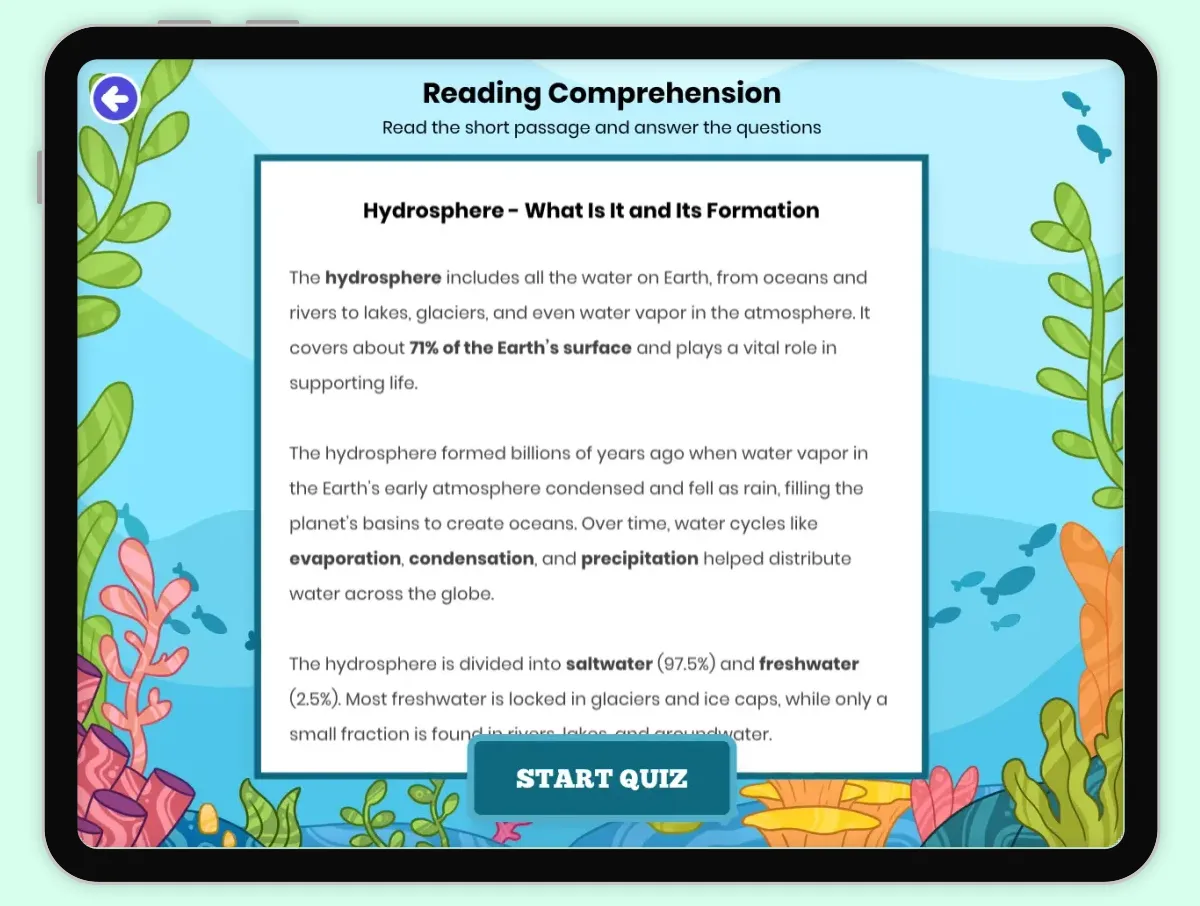Hydrosphere: What Is It and Its Formation — Passage and Quiz
Hydrosphere - What Is It and Its Formation
The hydrosphere includes all the water on Earth, from oceans and rivers to lakes, glaciers, and even water vapor in the atmosphere. It covers about 71% of the Earth’s surface and plays a vital role in supporting life.
The hydrosphere formed billions of years ago when water vapor in the Earth’s early atmosphere condensed and fell as rain, filling the planet’s basins to create oceans. Over time, water cycles like evaporation, condensation, and precipitation helped distribute water across the globe.
The hydrosphere is divided into saltwater (97.5%) and freshwater (2.5%). Most freshwater is locked in glaciers and ice caps, while only a small fraction is found in rivers, lakes, and groundwater.
Water in the hydrosphere is constantly moving through the water cycle, which includes processes like evaporation, transpiration, and runoff. This cycle ensures that water is distributed and recycled, supporting ecosystems and human activities.
The hydrosphere also regulates the Earth’s climate by absorbing and releasing heat. Oceans, for example, act as giant heat sinks, moderating temperatures and influencing weather patterns.
Fun fact: The hydrosphere contains about 1.4 billion cubic kilometers of water, enough to fill over 350 billion Olympic-sized swimming pools!
Quiz
1. What is the hydrosphere?
2. How much of the Earth’s surface is covered by the hydrosphere?
3. How did the hydrosphere form?
4. What percentage of the hydrosphere is freshwater?
5. What is the water cycle?
6. What role does the hydrosphere play in climate regulation?
7. What is the fun fact mentioned in the passage?
8. Where is most freshwater found?



















